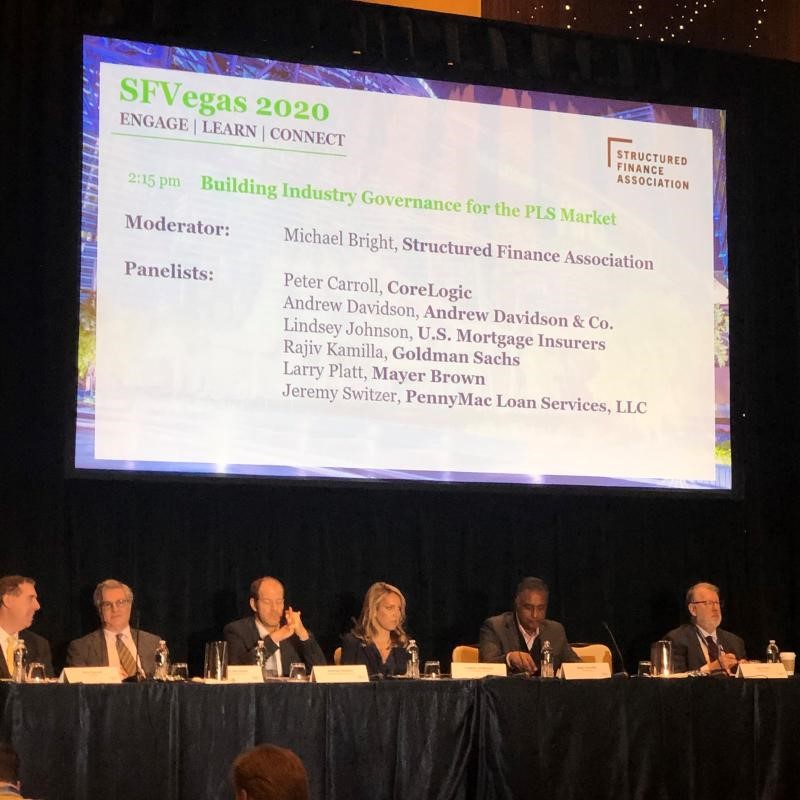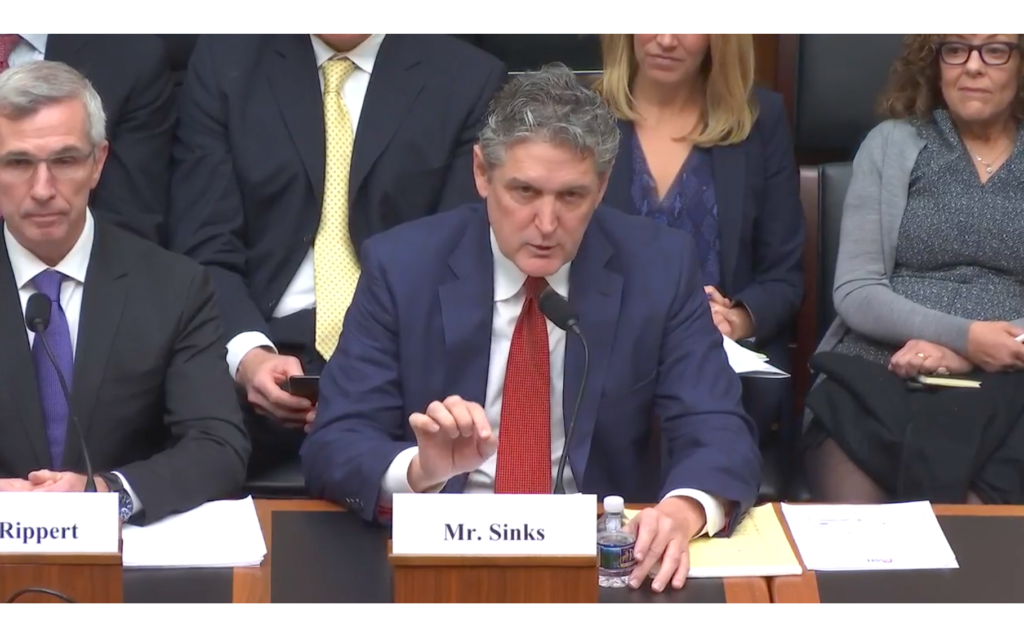We wish everyone a happy, healthy July 4th holiday and thank those who continue to serve the nation on the front lines of the COVID-19 health crisis. USMI and our members remain committed to supporting the U.S. housing finance system, ensuring homeowners continue to have access to prudent, affordable, low down payment mortgages to keep more cash on hand, especially during these critical and uncertain economic times. Additional information can be found on USMI’s COVID-19 Resource page. Below are updates related to COVID-19 as well as other recent significant policy and regulatory developments.
USMI Releases its Annual State-by-State Report
New Board Chairman at USMI
FHFA and the GSEs Provide Clarity on PMIERs Amid COVID-19
SCOTUS Rules on CFPB’s Single-Director Structure
CFPB Proposes Rules on QM Definition and Extension of the GSE Patch
FHFA Issues Re-Proposed Enterprise Capital Rule
ICYMI: New Video Explains How Private MI Work
- USMI Releases its Annual State-By-State Report. On June 22, USMI released its annual report on low down payment lending at the state level. The report highlights that the number of low down payment loans backed by private mortgage insurance (MI) increased 22.9 percent in 2019; meanwhile saving for a 20 percent down payment could take potential homebuyers 21 years to save — three times the length of time it could take to save a 5 percent down payment. USMI also found that the top five states for low down payment home financing with private MI were Texas, California, Florida, Illinois, and Ohio.
Upon release of the report, USMI President Lindsey Johnson noted that “Given the current economic environment and the desire of many people to keep more cash on-hand, low down payment loans are more important than ever. Loans backed by private MI are a great option as a time-tested means for accessing homeownership sooner while still providing credit risk protection and stability to the U.S. housing system.” See coverage of the report by National Mortgage News, Forbes, and Bankrate.
- New USMI Board Chairman. On July 1, USMI announced that Derek Brummer, President of Mortgage at Radian Group, will serve as the Chairman of USMI’s Board of Directors. Brummer, who was appointed Radian’s President of Mortgage in February, previously served as USMI’s Vice Chairman of the Board and brings extensive experience in housing finance. In the announcement, Brummer stated that he looks “forward to ensuring the industry remains well-positioned to serve as an important source of strength for the housing finance system during all market cycles, so consumers continue to have access to affordable, low down payment, conventional mortgages.”
- FHFA and the GSEs Provide Clarity on PMIERs Amid COVID-19. On June 26,the Federal Housing Finance Agency (FHFA) and the government sponsored enterprises (GSEs), Fannie Mae and Freddie Mac, provided guidance on the Private Mortgage Insurer Eligibility Requirements (PMIERs), PMIERs 2020-01, effective June 30, 2020. PMIERs are a set of operational and risk-based capital requirements implemented in 2015 and updated in 2018 for private MI companies to be approved to insure loans acquired by Fannie Mae and Freddie Mac. Due to the unprecedented nature of the COVID-19 disaster, including its national scope and the ongoing duration of the health and economic effects, the PMIERs language needed additional clarity, which USMI is pleased FHFA, Fannie Mae and Freddie Mac understood and provided.
USMI President Lindsey Johnson said in a statement, “USMI supports the actions taken by federal policymakers, particularly the FHFA, to stabilize the economy and provide assistance to those who have been impacted by the COVID-19 pandemic. USMI’s member companies are well-positioned to support the FHFA and GSEs’ efforts to ensure that homeowners who have been affected by COVID-19 are able to stay in their homes and maintain a safe and secure environment for their families.”
- SCOTUS Rules on CFPB’s Single-Director Structure. On June 29, the Supreme Court ruled in a 5-4 decision in Seila Law v. CFPB that the single-director structure of the Consumer Financial Protection Bureau (CFPB), where the leadership by a single director that is removable only “for cause” (inefficiency, neglect, or malfeasance), violates the Constitution. However, the Court did not invalidate the agency in its entirety. The majority held that the removal protection of the CFPB Director is severable from the other provisions of the Dodd-Frank Act that created the CFPB and defined its authorities and responsibilities. The CFPB did not challenge the decision and the White House released a statement saying the Supreme Court’s “decision represents an important victory for the fundamental principle that government officials should be accountable to the American people.” Given the FHFA has a similar structure, it is likely the legal conclusion may be applied to the FHFA. The Court’s decision opens the door for any future new administration to usher in new leadership of these two independent agencies.
- CFPB Proposes Rules on QM Definition and Temporary Extension of the GSE Patch. With the temporary QM category, also known as the “GSE Patch,” set to expire on January 10, 2021, the CFPB released Notices of Proposed Rulemakings (NPRMs) on a new QM definition and to temporarily extend the GSE Patch on June 22, 2020. Comments for the general QM definition are due 60 days after the rule is published in the Federal Register. In a statement after the release of the NPRMs, USMI President Lindsey Johnson stated, “USMI members, as takers of first-loss mortgage credit, emphasized the need to balance prudent underwriting with a clear standard that maintains access to mortgage finance for home-ready borrowers.”
The CFPB previously released an Advanced NPRM on the QM definition over a year ago, after which USMI submitted a comment letter that among other things, recommended replacing the current GSE Patch by establishing a single transparent and consistent QM definition that balances access to mortgage finance credit and proper underwriting guardrails to ensure consumers’ ability to repay (ATR). USMI specifically recommended that the Bureau establish a list of transparent mitigating underwriting criteria (compensating factors) for loans with a debt-to-income ratios above 45 percent and up to 50 percent. USMI also recommended that, to provide a more level playing field between the Federal Housing Administration (FHA) and the conventional market, the QM Safe Harbor annual percentage rate (APR) cap of the Average Prime Offer Rate (APOR) + 150bps needs to be increased to not arbitrarily shift the market to FHA, or leave some home-ready borrowers without access to mortgage finance credit. Setting the cap at APOR + 200bps would limit this arbitrary shift in the market, preserve greater private capital participation in the pricing of risk, and promote better taxpayer protection.
The Bureau’s June 2020 NPRM on the QM definition largely proposes an approach that would rely on a pricing spread between APR and APOR to determine QM status. While it is notable that the Bureau retained a QM Safe Harbor and QM Rebuttable Presumption, it is critical that the Safe Harbor threshold be increased from 150bps to 200bps above APOR, as it has been demonstrated that few loans are done outside of Safe Harbor. As USMI commented in its 2019 comment letter, it is essential that the Safe Harbor threshold be moved from 150bps to 200bps to ensure that creditworthy borrowers are not arbitrarily left only with the option of an FHA mortgage or left out of the market entirely, and to promote greater private capital participation in the pricing of risk and better taxpayer protection.
- FHFA Issues Re-Proposed Rule on Enterprise Capital. Another very significant rule recently released is the re-proposed Enterprise Regulatory Capital Framework (ERCF), which was published in the Federal Register this week, starting the 60-day clock for comments to be submitted. FHFA noted that one of the key reasons for the re-proposed rule is that establishing robust capital standards is a key step in the process to end the GSEs conservatorships, which was “a departure from the expectations of interested parties at the time of the 2018 proposal.” FHFA also noted that the re-proposed rule increases the quantity and quality of the regulatory capital at the GSEs to ensure their safety and soundness—with the overall capital required under the 2020 proposal being roughly $240 billion in loss absorbing capital—nearly $100 billion more than the 2018 proposal. FHFA officials believe that the re-proposed rule puts the GSEs on track to begin raising capital as soon as next year.
USMI submitted a comment letter to the FHFA in 2018 when the ERCF was originally proposed. On May 21, USMI issued a statement in response to the re-proposed rule, sharing its support for “meaningful capital requirements” and recognizing the ERCF’s importance in determining the future role of the GSEs, how private capital, such as private MI, will be able to continue to support the conventional market to protect taxpayers, and importantly, determine consumers’ access to and cost of mortgage finance credit.
- ICYMI: New Video Explains How Private MI Works. As part of June’s National Homeownership month, USMI released a new video helping first-time homebuyers understand whether they are mortgage ready. The video explores low down payment financing options to future homeowners and explains the benefits of private mortgage insurance.






 In a statement, USMI President and Executive Director Lindsey Johnson
In a statement, USMI President and Executive Director Lindsey Johnson 




